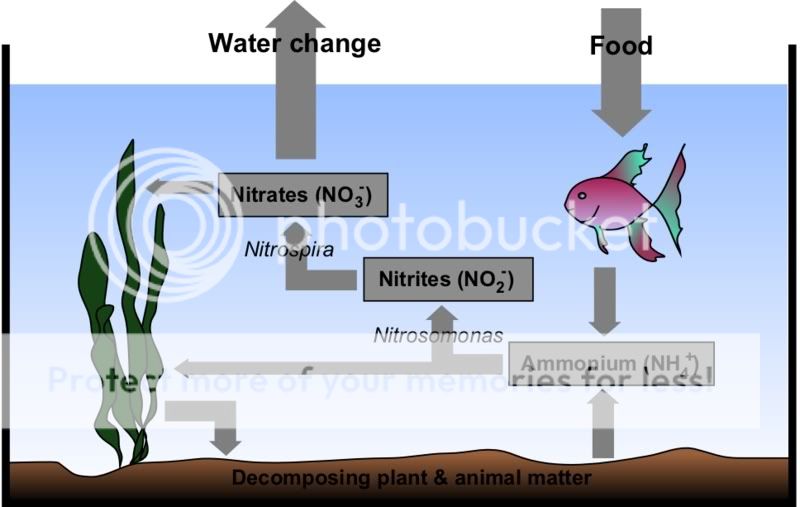Hi there DJ and welcome to TFF!
You've lucked into having a great introduction to the Nitrogen Cycle by one of the masters up there, BTT! Knowing about that cycle and all its ins and outs is key to becoming a good aquarist these days and it takes a while. Doing an "interactive fishless cycle" with the members here working with you is a great way to absorb this new information, learn it thoroughly and be working on other new problems, like understanding filters and learning the skills of good stocking.
If I recall from your other thread, you are setting up a 70L/18G and were disappointed to find its really considered too small for most kinds of sharks. I'm sure that was not fun and means you may have to take some time to work out some stocking that will work with the equipment you have and that you will like. The period of the fishless cycle is perfect timing for that process usually.
Also, its hard not to overstate the tedious nature of moving water every day. Thirty-five liters may not seem like much once or twice, but a whole month or two of either lugging it from the sink or setting up your hoses is going to get old very fast. There's much, much less of that with a fishless cycle.
As BTT says, even though we can sometimes keep the water changes going steadily and save the lives of the fishes, the permanent damage they are receiving is often not visible. Evolution has build the fishes physiology to operate correctly in the vast quantities of fresh water found in an outdoor stream or other freshwater body. Our aquariums are tiny by comparison, even the ones with hundreds of gallons. Fish gills, during the respiration process, give off both CO2 and ammonia but the gill structure assumes that ammonia will be washed away immediately and is not capable of operating properly when it is surrounded by even higher levels of ammonia than what it gives off itself. What happens in that case is permanent gill damage and the result is that the fish frequently lives a lower quality and shorter life as a result. This problem begins at the test level our liquid kits resolve as being about 0.25ppm of ammonia, a quite low level.
The other poison, nitrite(NO2), acts in a very different way. It damages the delicate protein structure of hemoglobin, the main carrier of oxygen in fish blood. The NO2 can attach to the deoxyhemoglobin (the deoxygenated blood returning in venous blood) the same way O2 (oxygen) can, but when it does, it reacts and turns the hemoglobin into a formless brown mess, rendering it disfunctional from that point on, even after the NO2 might be long gone. An NO2 level of 0.25ppm, a problem amount the same as ammonia above, is enough to cause plenty of this hemoglobin damage.
Timewise, it takes the Nitrosomonas and Nitrospira bacteria a month or two to build up the working structure of their biofilm structures (contrary to what one might think, these biofilm structures contain micro-channels for moving water and an organization of different materials and other bacterial species. Only after the bacteria have had time to build it up properly will your biofilter function with enough throughput to do the job. Until then, you are the manual toilet flusher, so to speak!

My own fishless cycle took a long time, but when I look back on it now it seems like nothing and the skill I gained has been invaluable! Hope this will help you change your mind, but regardless, keep us informed of how its going and the members here will enjoy chatting and helping.
~~waterdrop~~






